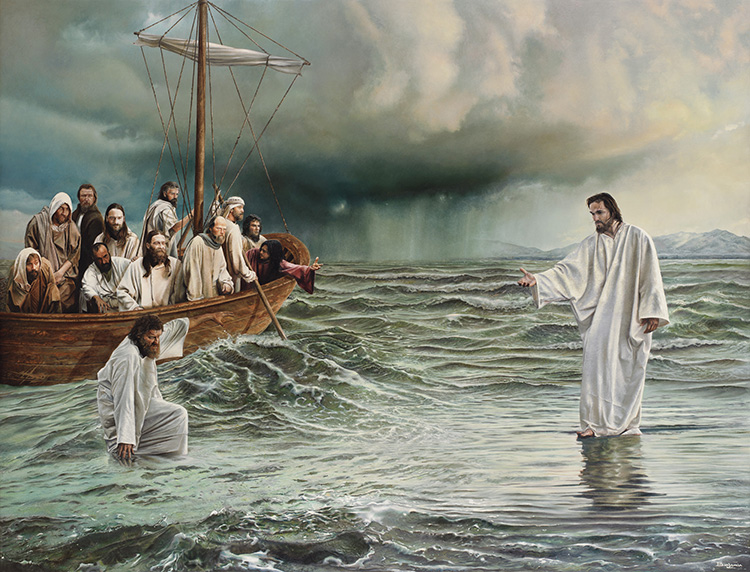Fecundated by the Divine Light of the Father and Son, the highest spirit and Ennoia, Sophia produces in her turn two other emanations — one perfect Christos, the second imperfect Sophia-Achamoth,from hakhamoth (simple wisdom), who becomes the mediatrix between the intellectual and material worlds.
Christos was the mediator and guide between God (the Higher), and everything spiritual in man; Achamoth — the younger Sophia — held the same duty between the “Primitive man,” Ennoia and matter. What was mysteriously meant by the general term, Christos, we have just explained.
Delivering a sermon on the “Month of Mary,” we find the Rev. Dr. Preston, of New York City, expressing the Christian idea of the female principle of the trinity better and more clearly than we could, and substantially in the spirit of an ancient “heathen” philosopher. He says that the “plan of the redemption made it necessary that a mother should be found, and Mary stands pre-eminently alone as the only instance when a creature was necessary to the consummation of God’s work.” We will beg the right to contradict the reverend gentleman. As shown above, thousands of years before our era it was found necessary by all the “heathen” theogonies to find a female principle, a “mother” for the triune male principle. Hence, Christianity does not present the “only instance” of such a consummation of God’s work — albeit, as this work shows, there was more philosophy and less materialism, or rather anthropomorphism, in it. But hear the reverend Doctor express “heathen” thought in
Page 173
Christian ideas. “He” (God), he says, “prepared her (Mary’s) virginal and celestial purity, for a mother defiled could not become the mother of the Most High. The holy virgin, even in her childhood, was more pleasing than all the Cherubim and Seraphim, and from infancy to the maturing maidenhood and womanhood she grew more and more pure. By her very sanctity she reigned over the heart of God. When the hour came, the whole court of heaven was hushed, and the trinity listened for the answer of Mary, for without her consent the world could not have been redeemed.”
Does it not seem as if we were reading Irenaeus explaining the Gnostic “Heresy, which taught that the Father and Son loved the beauty (formam) of the celestial Virgin”? or the Egyptian system, of Isis being both wife, sister, and mother of Osiris-Horus? With the Gnostic philosophy there were but two, but the Christians have improved and perfected the system by making it completely “heathen,” for it is the Chaldean Anu — Bel — Hoa, merging into Mylitta. “Then while this month (of Mary),” adds Dr. Preston, “begins in the paschal season — the month when nature decks herself with fruits and flowers, the harbingers of a bright harvest — let us, too, begin for a golden harvest. In this month the dead come up out of the earth, figuring the resurrection; so, when we are kneeling before the altar of the holy and immaculate Mary, let us remember that there should come forth from us the bud of promise, the flower of hope, and the imperishable fruit of sanctity.”
This is precisely the substratum of the Pagan thought, which, among other meanings, emblematized by the rites of the resurrection of Osiris, Adonis, Bacchus, and other slaughtered sun-gods, the resurrection of all nature in spring, the germination of seeds that had been dead and sleeping during winter, and so were allegorically said to be kept in the underworld (Hades). They are typified by the three days passed in hell before his resurrection by Hercules, by Christ, and others.
This derivation, or rather heresy, as it is called in Christianity, is simply the Brahmanic doctrine in all its archaic purity. Vishnu, the second personage of the Hindu trinity, is also the Logos, for he is made subsequently to incarnate himself in Christna. And Lakmy (or Lakshmy) who, as in the case of Osiris and Isis, of En-Soph and Sephira, and of Bythos and Ennoia, is both his wife, sister, and daughter, through this endless correlation of male and female creative powers in the abstruse metaphysics of the ancient philosophies — is Sophia-Achamoth. Christna is the mediator promised by Brahma to mankind, and represents the same idea as the Gnostic Christos. And Lakmy, Vishnu’s spiritual half, is the emblem of physical nature, the universal mother of all the material and revealed forms; the mediatrix and protector of nature, like Sophia-Achamoth, who is made by the Gnostics the mediatrix between the Great

Moe is the founder of GnosticWarrior.com. He is a father, husband, author, martial arts black belt, and an expert in Gnosticism, the occult, and esotericism.




